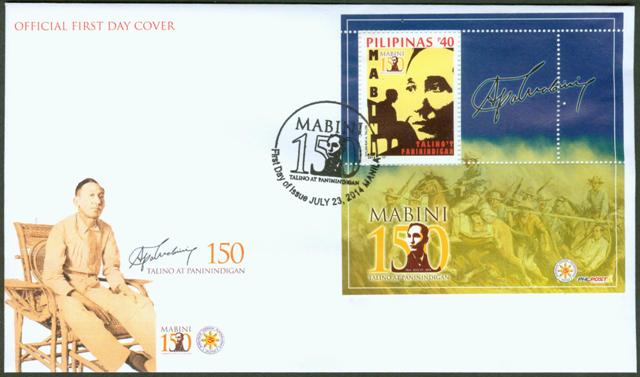2014, July 23. Apolinario Mabini @ 150 (150th Birth Anniversary)
Litho Offset, Amstar Company, Inc., Perf. 14
Se-tenant Strips of 3, Miniature Sheets of 9; Souvenir Sheets of One
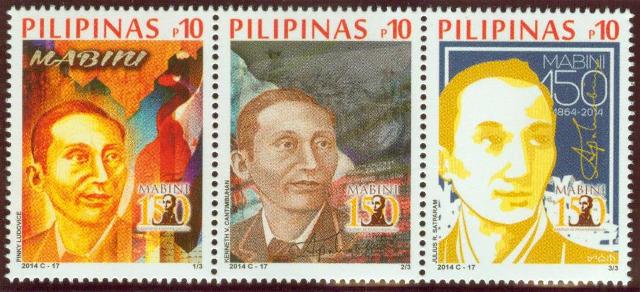
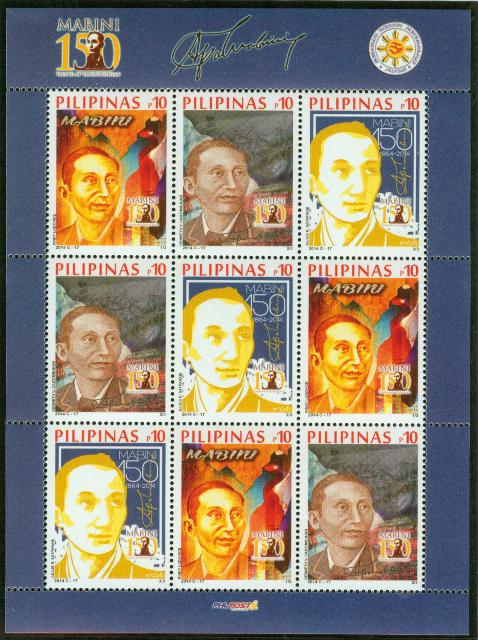
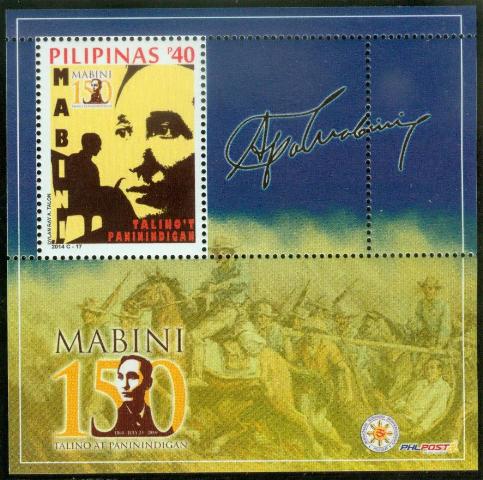
Se-tenant Strips of Three (35,100)
10p Mabini @150 by Pinky Luduvice
10p Mabini @150 by Kenneth V. Cantimbuhan
10p Mabini @150 by Julius R. Satparam
Miniature Sheets of 9 (11,700)
Souvenir Sheets of One (5,000)
40p Mabini @150 by Dylan Ray A. Talon
Layout Artist: Victorino Z. Serevo
Designs: Winners from Mabini@150 Postage Stamp Design Contest
First Day Covers: Manila
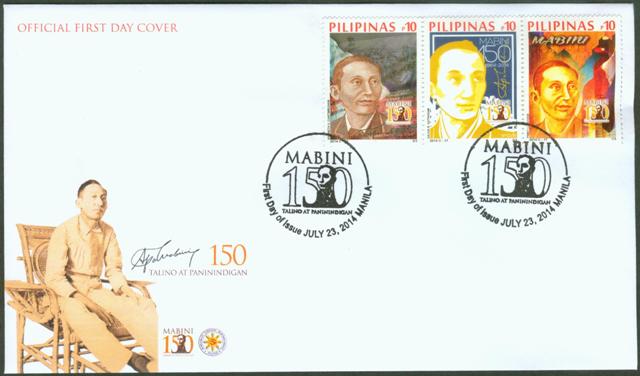
Phlpost Official FDC Envelopes
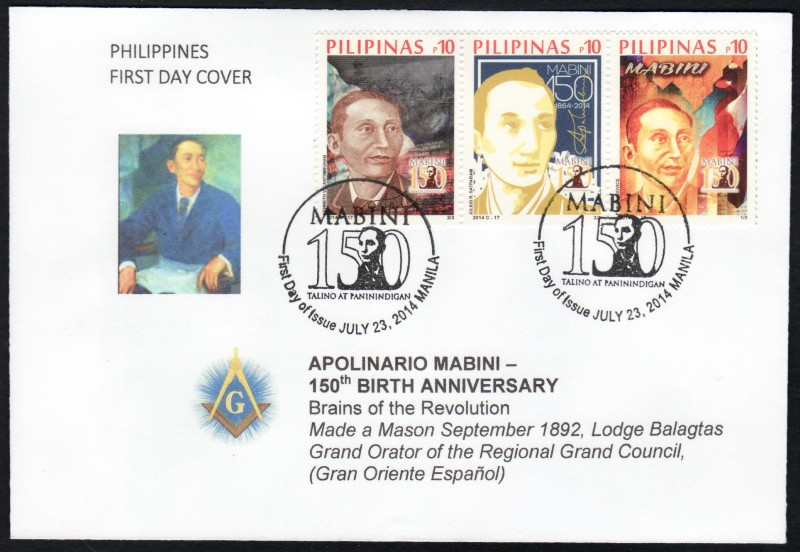
Privately Prepared Masonic FDCs
APOLINARIO MABINI @150: Talino at Paninindigan (Wisdom and Integrity)
Apolinario Mabini y Maranan (July 23, 1864 — May 13, 1903) was a Filipino revolutionary, lawyer, and statesman who served as the first Prime Minister of the Philippines, serving first under the Revolutionary Government, and then under the First Philippine Republic.
Because of his role as advisor during the formation of the revolutionary government, and his contributions as statesman thereafter, Mabini is often referred to as "the Brains of the Revolution". Mabini lost the use of both his limbs due to Polio in 1896. This disability often proved a political liability for Mabini during his lifetime, but made him visually iconic in terms of historical descriptions, earning Mabini the historical moniker "Sublime Paralytic".
The 1896 Revolution
Believing that the Reform Movement still had a chance to achieve success, Mabini did not immediately support the Philippine Revolution. He became part of the La Liga Filipina wherein they would write instead of revolt and chose that they would rather be a colony of Spain rather than having a big revolution for their freedom. When José Rizal, part of the "La Liga Filipina", was executed in December that year, however, Mabini changed his mind and gave the revolution his wholehearted support.
In 1898, while vacationing in Los Baños, Laguna, Emilio Aguinaldo sent for Mabini. It took hundreds of men taking turns carrying his hammock to portage Mabini to Kawit. Mabini was most active during the Spanish–American War as he assisted General Aguinaldo. He served as the chief adviser for General Aguinaldo after the Philippine Declaration of Independence on June 12. He drafted decrees and edited the first ever constitution in Asia (the Malolos Constitution) for the First Philippine Republic, including the framework of the revolutionary government which was implemented in Malolos in 1899.
Prime Minister of the Philippines
Apolinario Mabini was appointed prime minister and was also foreign minister of the newly independent government of Aguinaldo on January 2, 1899. Eventually, the government declared the first Philippine Republic in appropriate ceremonies on January 23, 1899. Mabini then led the first cabinet of the Republic.
Mabini found himself in the center of the most critical period in the new country's history, grappling with problems until then unimagined. Most notable of these were his negotiations with Americans, which began on March 6, 1899. The United States and the Philippine Republic were embroiled in extremely contentious and eventually violent confrontations. During the negotiations for peace, Americans offered Mabini autonomy for Aguinaldo's new government, but the talks failed because Mabini’s conditions included a ceasefire, which was rejected. Mabini negotiated once again, seeking for an armistice instead, but the talks failed yet again. Eventually, feeling that the Americans were not negotiating 'bona fide,' he supported the war. He resigned from government on May 7, 1899. http://en.wikipedia.org/wiki/Apolinario_Mabini
-
Famous Filipinos
